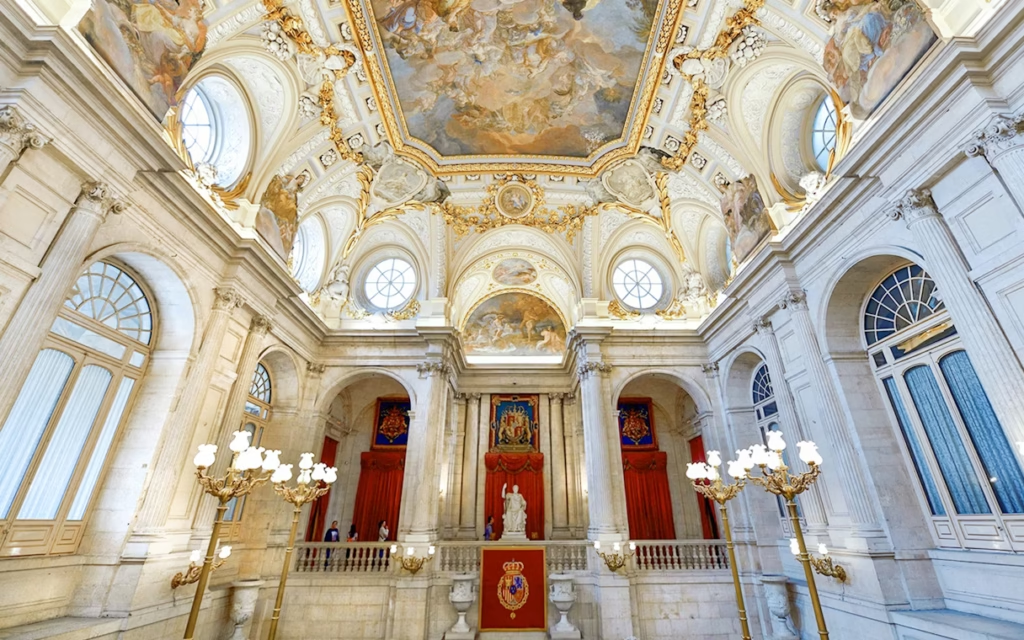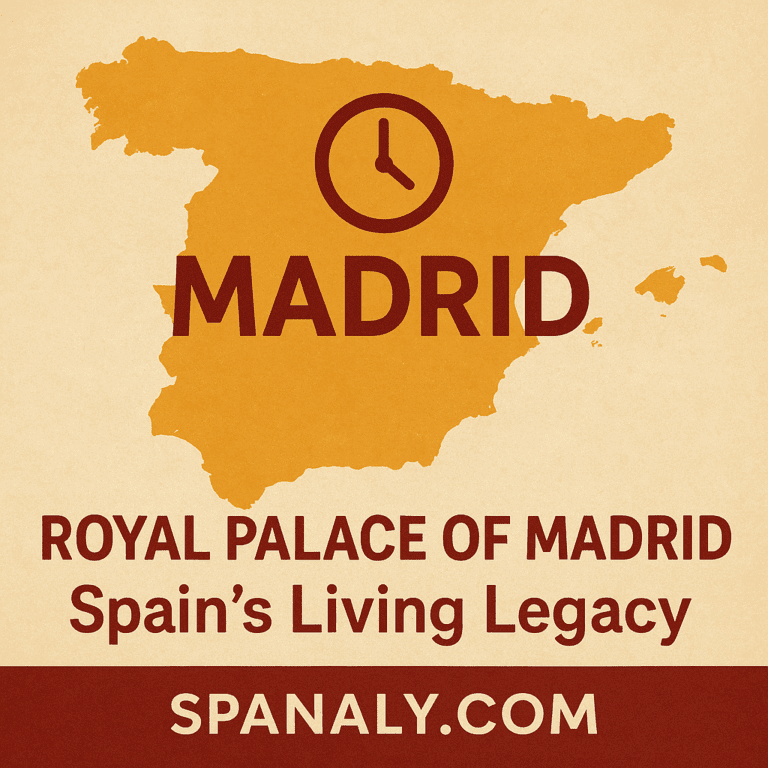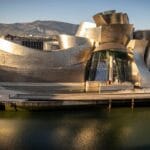In the heart of Madrid stands one of Europe’s most magnificent
royal residences — the Royal Palace of Madrid (Palacio Real de Madrid).
More than just a monument, this grand structure tells the story of
Spain’s monarchy, culture, and artistry through centuries of history.
Built on the site of a 9th-century Moorish fortress, the palace became
the official residence of the Spanish royal family in the 18th century.
(For all logistical advice and itinerary ideas for your Madrid trip, start with our main travel compendium.) Although the royals now reside
at the Palacio de la Zarzuela, the Royal Palace remains their official
ceremonial home, used for state events, receptions, and historical
ceremonies. Visiting the palace means stepping into a living museum —
where every corridor, fresco, and chandelier whispers the grandeur of
Spain’s royal heritage.
Table of Contents
Toggle🏰 A Glorious Past
Construction of the Royal Palace began in 1738 under King Philip V, following the destruction of the old Alcázar by fire. The design, entrusted to Italian architect Filippo Juvarra and completed by Giovanni Battista Sacchetti, reflects a harmonious blend of Baroque and Classical styles.
The palace is the largest in Western Europe, covering over 135,000 square meters with more than 3,400 rooms. Each room is richly decorated with marble, gold leaf, silk tapestries, and artworks by masters like Goya, Velázquez, and Caravaggio.
Among the highlights are:
The Throne Room (Salón del Trono) – an opulent hall with red velvet walls, bronze lions, and ceiling frescoes by Tiepolo.
The Hall of Mirrors (Salón de los Espejos) – reminiscent of Versailles, symbolizing royal power and elegance.
The Royal Chapel (Capilla Real) – home to a majestic 18th-century organ.
The Royal Armoury (Real Armería) – displaying one of the world’s finest collections of arms and armor dating back to the 13th century.
🔗 Explore details on the Official Royal Palace of Madrid website
🖼️ Art, Architecture, and Symbolism

The Royal Palace is not merely a royal residence — it is a masterpiece of European art and architecture.
Its design is symmetrical, balanced, and majestic, with influences from French Baroque, Italian Classicism, and Spanish tradition.
Inside, the royal collections include paintings, sculptures, porcelain, musical instruments, and an impressive series of Stradivarius violins.
The Royal Pharmacy still preserves antique medicine jars and tools used by royal physicians.
Every room is a lesson in art history, blending architecture, politics, and craftsmanship into a single narrative of Spain’s evolution as a global power.
🌆 The Palace and Madrid’s Cultural Heart
The Royal Palace sits in Plaza de Oriente, one of Madrid’s most elegant squares, surrounded by gardens, fountains, and cultural landmarks.
From here, visitors can easily explore:
Almudena Cathedral (Catedral de la Almudena) – directly facing the palace, combining Gothic and Neoclassical design.
Sabatini Gardens – symmetrical terraces with panoramic views of the palace façade.
Campo del Moro Gardens – a vast green oasis extending toward the Manzanares River.
The palace’s location makes it a perfect starting point for exploring Madrid’s Old Town, Gran Vía, and the Royal Theatre (Teatro Real).
🔗 More about Madrid attractions at Official Madrid Tourism
🕰️ Practical Information for Visitors
📍 Address: Calle de Bailén, s/n, 28071 Madrid, Spain
🕐 Opening Hours:
Winter (October–March): 10:00 AM – 6:00 PM
Summer (April–September): 10:00 AM – 7:00 PM
🎟️ Tickets:
General: €14
EU & Latin American citizens: €7 (reduced)
Free entry: Monday–Thursday, 5–7 PM (April–September)
🚇 How to Get There:
Metro: Opera (Lines 2 & 5)
Bus: Lines 3, 25, 39, 148
🔗 Check latest visitor info on Patrimonio Nacional
💡 Travel Tips from Spanaly
Arrive early to avoid long queues, especially during free-entry hours.
Book your tickets online in advance — the lines can be long on weekends.
Don’t skip the Changing of the Guard, held every Wednesday and Saturday at noon.
Visit the Sabatini Gardens at sunset — the palace glows beautifully in the evening light.
Combine your visit with Almudena Cathedral and Teatro Real for a perfect royal day in Madrid.
“Today, the Royal Palace of Madrid continues to attract millions of visitors every year, making it one of Spain’s top cultural landmarks and a highlight of Madrid tourism.”
💬 Conclusion
The Royal Palace of Madrid stands as a shining emblem of Spain’s royal past and artistic brilliance.
From its breathtaking architecture to its priceless art collections, every detail captures the grandeur of a nation that once ruled half the world.
More than a monument, it is a living legacy — connecting the modern traveler with centuries of history, elegance, and pride.
Whether you’re exploring Madrid for a day or a week, the Royal Palace is a must-see — a timeless treasure where the past meets the present.



[…] The Royal Palace of Madrid (Palacio Real) is one of Europe’s most magnificent palaces, offering visitors a glimpse into the grandeur of Spanish royalty. Explore lavishly decorated rooms, exquisite frescoes, and ornate halls, and stroll through beautifully landscaped gardens. […]